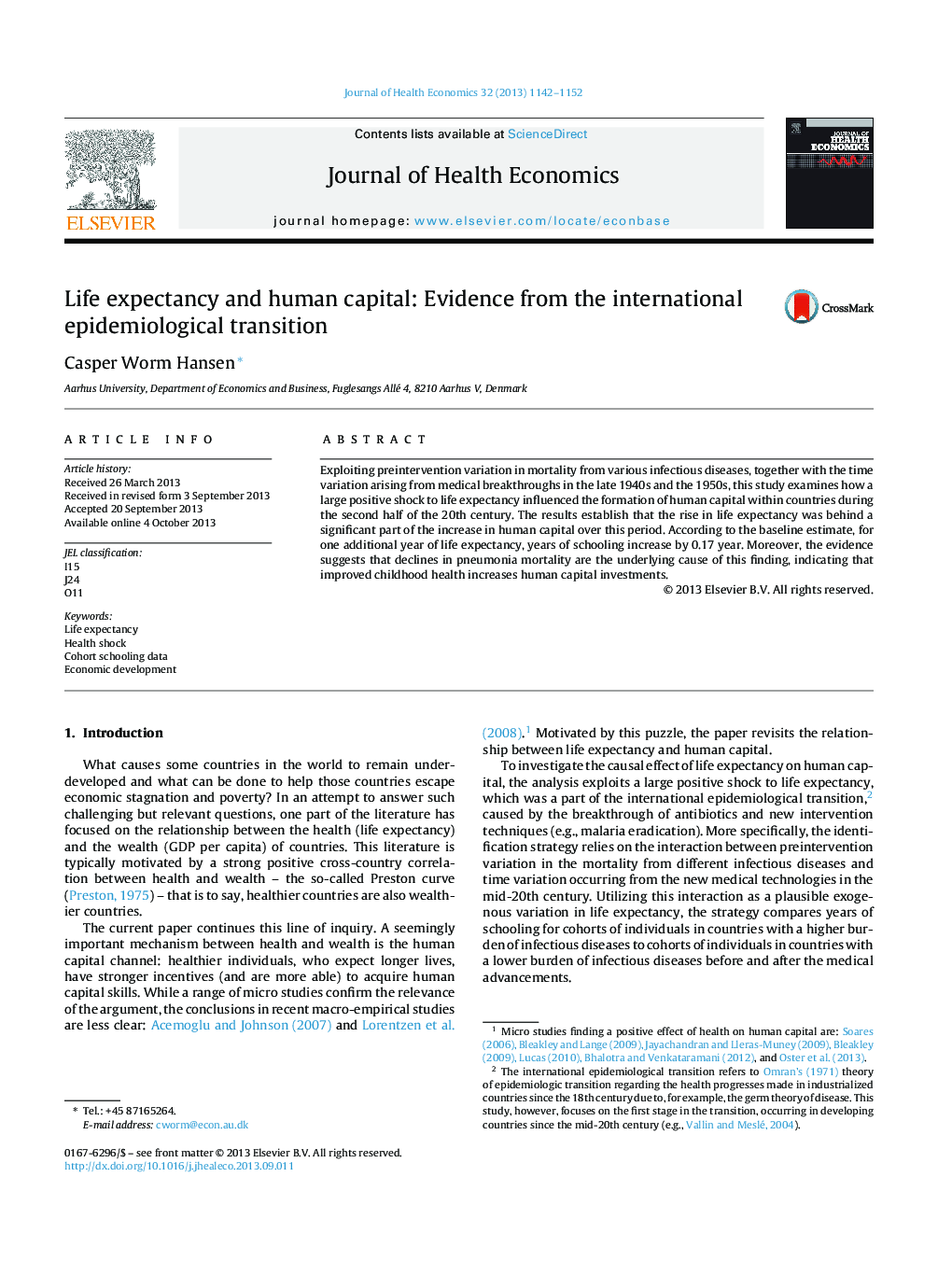| Article ID | Journal | Published Year | Pages | File Type |
|---|---|---|---|---|
| 961275 | Journal of Health Economics | 2013 | 11 Pages |
Abstract
Exploiting preintervention variation in mortality from various infectious diseases, together with the time variation arising from medical breakthroughs in the late 1940s and the 1950s, this study examines how a large positive shock to life expectancy influenced the formation of human capital within countries during the second half of the 20th century. The results establish that the rise in life expectancy was behind a significant part of the increase in human capital over this period. According to the baseline estimate, for one additional year of life expectancy, years of schooling increase by 0.17 year. Moreover, the evidence suggests that declines in pneumonia mortality are the underlying cause of this finding, indicating that improved childhood health increases human capital investments.
Related Topics
Health Sciences
Medicine and Dentistry
Public Health and Health Policy
Authors
Casper Worm Hansen,
